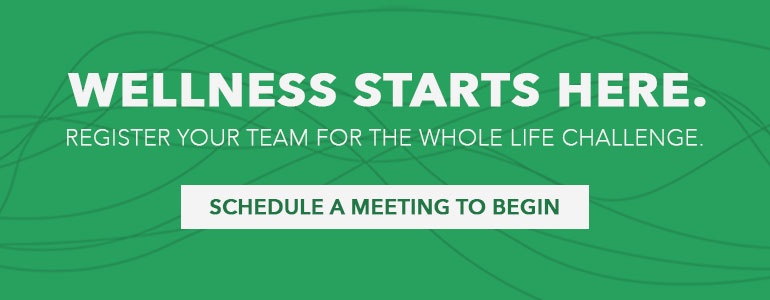Nowadays, many U.S. employees are choosing to work well into their golden years. According to a recent survey conducted by The Harris Poll for CareerBuilder, a whopping 53% of workers past the age of sixty say they’re delaying retirement. An even more mind-boggling 40% of participants don’t feel they’ll retire until at least the age of seventy. This new dynamic in the American workforce means the age-gap of coworkers will continue to widen.
Recent college graduates might work alongside employees who are forty, or even fifty, years their senior. Stark variations in musical and clothing tastes aside, employees from different generations sometimes butt heads on values affecting workplace matters. While bridging the generation gap at the office may seem overwhelming, it isn’t impossible.
 If multi-generational challenges are affecting both your business culture and bottom line, corporate volunteerism and charity might provide the solution you’re looking for. To explore this concept further, let’s first look at the profiles of the generations at play in businesses across the United States. Then, we’ll delve into the challenges associated with a multi-generational workforce. Finally, we’ll provide the benefits of volunteerism and charity work when it comes to managing multi-generational teams.
If multi-generational challenges are affecting both your business culture and bottom line, corporate volunteerism and charity might provide the solution you’re looking for. To explore this concept further, let’s first look at the profiles of the generations at play in businesses across the United States. Then, we’ll delve into the challenges associated with a multi-generational workforce. Finally, we’ll provide the benefits of volunteerism and charity work when it comes to managing multi-generational teams.
4 Generations of Employees in the United States
Here’s a quick breakdown of the most prevalent generations comprising the U.S. workforce today:
- The Silent Generation: Members of the Silent Generation were born from 1927 to 1945. This generation has often defined themselves through lifelong loyalty to their workplaces. Self-sacrifice, discipline, and caution are values associated with this group of older employees.
- Baby Boomers: This heralded generation is comprised of people born between the years of 1946 and 1964. Known as the first TV generation, Baby Boomers are often labeled as competent, competitive, and ambitious employees. They may desire to be part of the larger scope of things and know if their work is making an impact.
- Generation X: Born between the years of 1965 and 1980, this group of individuals grew up when two-income households were becoming more prevalent. Labeled as independent and individualistic, Generation X employees have left their mark on society through contributions to the Internet and information technology.
- Millennials: The youngest major group of workers in the U.S., these individuals were born from 1981 to 2000. Unlike their Generation X counterparts, Millennials are thought to desire conformity rather than individualism. Shifts to more nurturing, highly involved parenting styles are often cited for Millennials’ preference for teamwork rather than individual assignments.
3 Multi-Generational Workplace Challenges
Now that you have a better grasp of the generations working alongside each other, here are some common challenges that can result:
1. Communication Style
The channels of communication have changed vastly over the past several decades. As a result, virtually all generations prefer to process and respond to information differently:
- The Silent Generation may desire to communicate through written letters, by phone, or in person.
- As a general rule, Baby Boomers like to reach out to others in person, on the phone, or by e-mail.
- Generation X employees typically like to communicate through e-mail, text, and social media.
- Millennials favor communicating through texting and social media. They’re also famous for using abbreviations and informal language.
With such differing ideals, communication breakdowns among multi-generational workers seem inevitable.
2. Workplace Values
Older employees might measure their job performance in terms of how many hours they spend at the office. However, younger workers may track their work achievements by what they produce rather than how much time they spend inside the four walls of their places of business. Often valuing work-life balance, younger generations may be more likely to be interested in work-from-home opportunities. Millennials may thrive when working on teams while older generations might feel they can accomplish more when working alone.
3. Harmful Stereotypes
Regardless of which generation employees belong to, they are individuals. While workers might embrace some of the communication styles, workplace values, and other labels associated with their generation, making assumptions about employees based on age can be detrimental. This is especially the case when the stereotypes employees place on coworkers are negative. For instance, Millennials have been referred to as lazy and technology obsessed while Baby Boomers have been labeled self-centered.
4 Ways Volunteerism/Charity Can Bridge the Generation Gap at Work
While the older and younger workers’ differences at the office may seem unsurmountable, a research study conducted by Jennifer Mencl and Scott W. Lester and published in the Journal of Leadership & Organizational Studies suggests the generations may be more alike than different. Therefore, focusing on commonalities is crucial.
Here are some ways the giving act of volunteerism/charity can help multi-generational employees find common ground and improve relationships with one another:
1. Helps Employees of All Ages Bond
Employees often spend numerous hours together in an office setting each week. But, surprisingly, they may not know much, if anything, about each other outside of their roles within the business. Due to day-to-day operations, opportunities for workers to connect with each other and develop relationships might be limited. This may especially be the case with employees hailing from different generations.
Volunteering off-site gives workers the chance to get better acquainted with each other in a more informal setting. While stacking cans for a food drive or helping to build a home for a needy family, multi-generational employees can bond without giving thought to titles and organizational hierarchy. Bonding can foster communication and culture back at the office.
2. Provides Valuable Worker Learning Opportunities
Volunteerism or charity projects can provide workers with unique, valuable learning opportunities. While working alongside each other to benefit a worthy cause, the Silent Generation and Baby Boomers can learn a lot about technology from younger generations. They can also discover social viewpoints their younger colleagues are passionate about. Generation Xers and Millennials can garner much-needed leadership insight and perspective in a causal atmosphere when volunteering with older generations. Without the pressure of a looming deadline, older and younger generations can practice teamwork skills that will carry back to the workplace.
3. Boosts Employee Happiness
Happy workers are more likely to be harmonious ones. Helping someone else is believed to trigger the release of oxytocin in your brain. Oxytocin is a chemical that enhances your mood. As your rates of oxytocin rise, so do your levels of serotonin and dopamine, neurotransmitters that also affect your mood.
4. Slashes Worker Stress
When oxytocin is released in your brain, it positively affects cortisol. Cortisol is the hormone responsible for stress. When multi-generational workers are less stressed, they may be less likely to become irritated by their older or younger coworkers’ different ways of doing things.
 3 Tips for Managing Multi-generational Volunteer/Charity Teams at Work
3 Tips for Managing Multi-generational Volunteer/Charity Teams at Work
To reap the rewards of volunteerism and/or charity in the workplace, managing multi-generational teams well is essential. Here are some tips to help companies accomplish this feat:
1. Relate to Workers’ Identity
If you want to strengthen relationships among multi-generational employees, allow them to select projects they’re passionate about. Instead of simply delegating employees to volunteer teams randomly, elicit their feedback. Ask them what they care about and where they would like to make a difference. When all employees on a multi-generational volunteer team are emotionally invested in the project, magical things can happen.
2. Create Team Norms
Developing team norms can ease tensions relating to differences in communication styles and workplace values of multi-generational employee volunteers. When rules are created up front, workers are less likely to get offended by unexpected behaviors. For instance, team members might decide to only meet on weekends or for a maximum of two hours after work on weekdays. Multi-generational workers may wish to establish ground rules for communicating. For example, employees might choose phone, email, or text as acceptable forms of communicating with other team members and decide that all messages should be responded to within 24 hours.
3. Optimize the Flow of Employee Volunteer Tasks
To bridge the generation gap at work with volunteerism and/or charity, you must strive to keep multi-generational teams challenged, but not overwhelmed. Avoid assigning overly complicated volunteer projects to employees that might lead to frustration and escalating tension. You also don’t want to dole out excessively simple volunteer tasks that will bore workers and negate the chance for learning opportunities among different generations.
How Will You Solve the Generation Gap?
When multi-generational teams of employees work together on volunteer projects, it’s a win-win situation for everyone involved. Communities are served. Employees reap benefits both individually and collectively. Unexpected, lasting relationships among older and younger workers are forged, which creates a healthier, more productive workplace environment.







